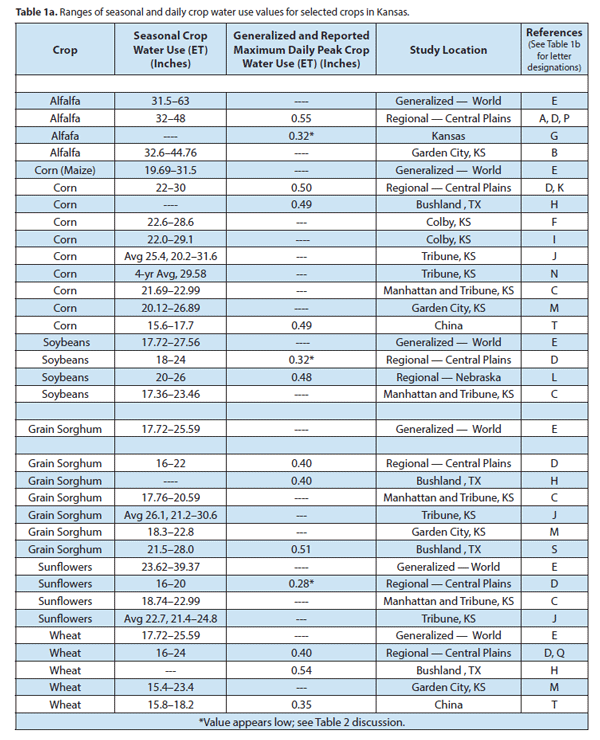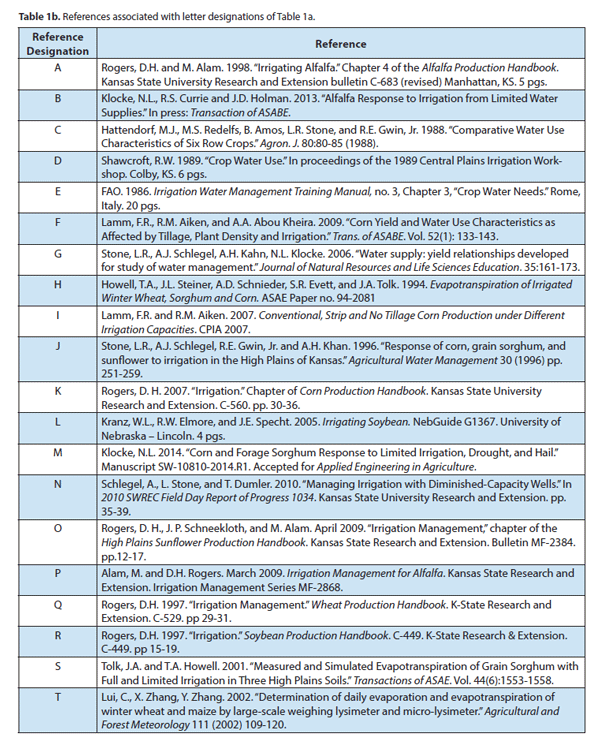Crop water use, also referred to as evapotranspiration (ET), is the water used by a crop for growth and cooling. Only a small fraction of the water a plant takes in is used for growth, often only about 1 percent; the majority of water is needed to allow the plant to cool itself. The movement of water into the plant is important, since this water carries essential nutrients needed by the plant for growth processes.
Seasonal crop water use variations for a specific crop occur due to differences in year-to-year weather conditions and due to the specific variety or hybrid for a given crop, especially as related to the maturity length. Typical ranges of seasonal and daily crop water use values and ranges from numerous studies are shown in Table 1a.



Crop water use variations for a given crop based on maturity length are illustrated in Figure 5. In the example, five maturity lengths of corn were planted at the same date and population. The crop water use for a longer maturity length, as might be expected, has a higher water use requirement than for a shorter maturity length. In this example, the water use variation from the shortest maturity to the longest maturity was approximately 4 inches. Normally, the crop water use value cited for an area is for the longest maturity group that can be reliably grown in an area. Extremely detrimental yield losses can occur if a too long of maturity group crop is planted and growth is stopped by frost before the crop has reached yield maturity.